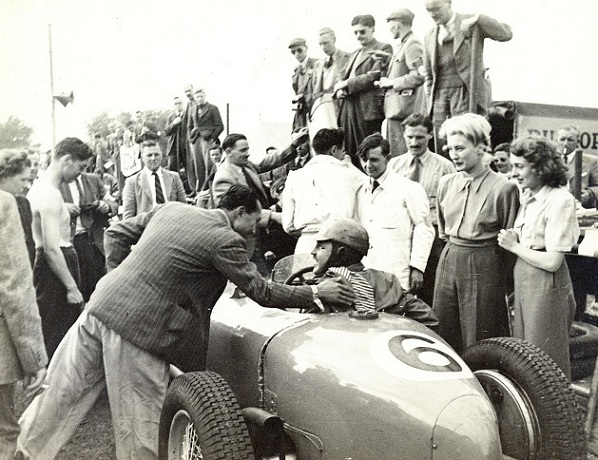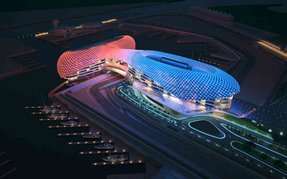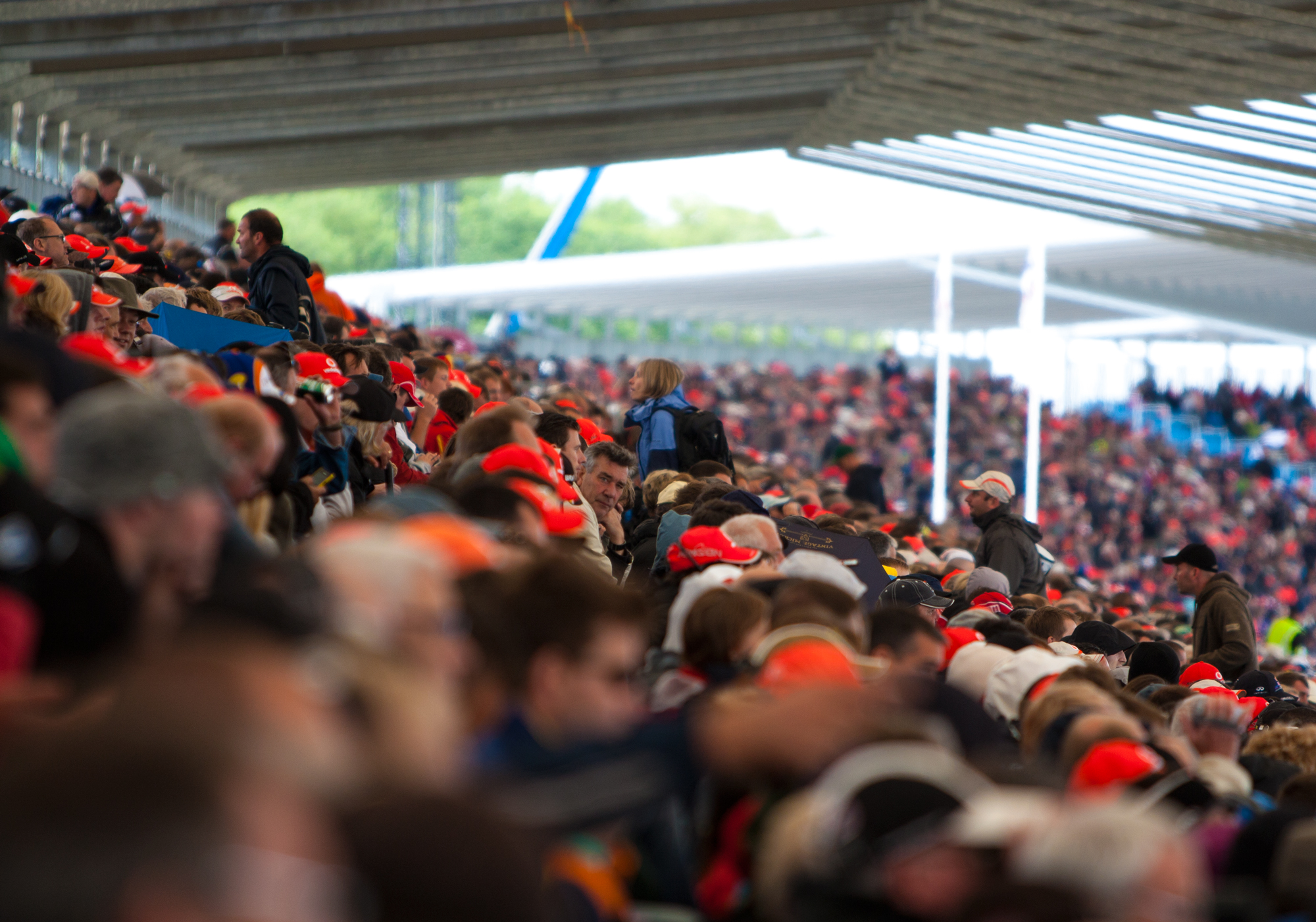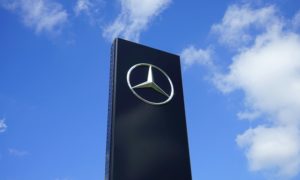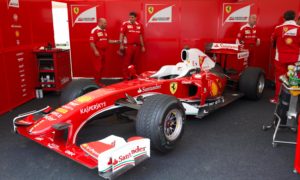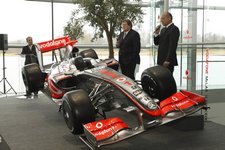 Ron Dennis may have stepped down as McLaren Team Principal, but the 61-year-old will continue to wield his influence over Formula One for a long time to come.
Ron Dennis may have stepped down as McLaren Team Principal, but the 61-year-old will continue to wield his influence over Formula One for a long time to come.
Which is why the world’s assembled media, including Forumula1.com, listened attentively to what he had to say on driver management, cost-cutting, and the 2009′ regulation changes.
Q. You know more than most what it takes for a driver to become a champion and how it affects them afterwards. How do you think it is sitting with Lewis, and is he the sort of character who can use it as a launch pad for a period of dominance like the really great drivers you have been associated with?
RD: I think to give you an analogy; if you are a climber and you’ve climbed Everest then you don’t fear doing it again. It is something you know you can do, and then what you have to do is look at different ways of achieving it – maybe the challenges this year with a new set of regulations are different to last, and just as a climber varies his route, that is the way you have to look at Lewis’ approach. He will be very focused on those areas where he has to really raise his game.
As he touched on, driver overload is going to be an issue this year. There is an awful lot of functionality that is under the control of the driver, and this is going to be a challenge for the drivers to be able to cope with everything and get the best out of everything.
It is not going to be, with KERS, as simple as pressing the button, it will be a question of optimising its use throughout a lap, not just on a straight. You start throwing that diff controls, brake controls and things that are within the regulatory process to change, and that is where he will focus.
He is the sort of guy, as is Heikki, who will understand, and the engineers will give him that understanding, the benefits of being absolutely best at that particular challenge. It goes without saying that all the other things, the talent, the commitment and the sacrifice, all the other things he brought to bear on winning last year’s world championship, will be still in place.
Obviously he will be better equipped to win this year’s, but he has got a formidable teammate and he will underestimate the challenge from Heikki.
Q. We are in a serious recession, particularly in the automobile industry. The president of the governing body is attempting to impose restrictions that will cut costs. Can you give us an idea of what cost cutting you have done?
RD: Of course there are three primary groups within Formula One it’s the FIA, it’s FOM, the commercial rights holder and it is the teams.
The teams are now represented by FOTA and it is first time an organisation has been supported by every single team in Grand Prix racing. FOTA’s objectives are very clear: they are to further the interest of the teams and to embrace the challenges of going Grand Prix racing.
It is the teams who have embraced the issue of reducing costs. It is very challenging to reduce costs in F1 because it is a competitive sport, and therefore cost reduction has to be brought about without it having a specific detrimental affect on one team. It has to be something that can be policed across all teams. For example the testing ban is very easy to police. The aerodynamic changes the teams have agreed and introduced are more challenging to police, but still policeable.
The extensive changes we have made to engine and gearbox costs these have been done by increasing the lifespan and, in some instances, understanding the necessity to support the smaller teams with a very cost-effective support programme. The cost of going motor racing, for example, Mercedes-Benz and McLaren, in respect of engines and gearboxes is well north, even with our reduced budgets, of 100 million Euros especially with KERS.
A small team can now cover all those costs for 6.5 million Euros, so you can see the manufacturers and the teams who have come to this particular point, have really focused on necessity to make F1 affordable in respect of competing.
I think it is important to differentiate competing and being competitive. The important thing is to make sure the teams can compete. If we can give them the same engines and gearboxes for 6.5 million Euros, compared to the budgets that we have to have to develop and optimise those performances, then clearly it is the teams who have stepped forward and addressed the issue of assistance to the smaller teams. And that is just one example.
It applies across the board, and each step FOTA takes is carefully considered and carefully documented, and then signed as a separate entity. We are accumulating a whole range of actions that will be properly documented and properly thought through and properly executed as the teams as FOTA.
Our next focus will be to look at the market research that has been conducted and financed by the teams, to really take a strong and hard look at how we make F1 better. Nothing will not be looked at.
The qualifying, the racing format everything will be looked at, but it will be looked at on the basis of proper research, not an intuitive feel. That is how we conducted these cost reductions. They have been done through a very focused programme involving a very large quantity of the team’s personnel.
If you identified over the 10 teams, you are talking about 100 people being involved in different sectors identifying costs, understanding costs, and trying to apply cost reductions.
I understand that the FIA always wants to push for more, more, more – whatever it is. But we are in an environment where changes have to be considered and well thought through. This isn’t an idea where you can just spontaneously come up with an idea and knee jerk into it.
It has to be scientifically and commercially well considered, and that is what we have been doing. I have to say that various people who head up the groups have just been doing an extremely good job.
Q. Can you talk about the tremendous challenge on the whole organisation caused by the new regulations?
RD: It is how to keep the answer short! The biggest problem is the concept of the car because if you have the wrong concept you are locked into an uncompetitive car. That required all the various iterations of wheelbase, weight distribution, how the aerodynamics fundamentally work, how far should the chassis be from the ground at the point it passes through the front wheels which is the first aerodynamic restrictions, or the primary aerodynamic restriction on the concept of the car because there is a given cross section between them, all of these things have to be carefully thought through and evaluated within the regulations.
It is a huge programme, and it is a programme that is best typified by the fact that I think it is accurate to say we are two months already into the 2010 car, so that gives you an indication. And the 2010 regulations are pretty much the same as the 2009 regulations, so you can imagine that it was probably 18 months ago that we started work on the philosophy of the car and the concept of the car.
How it is executed in this organisation is the matrix system which is Martin (Whitmarsh’s) technical strategy. It was introduced five-plus years ago and it has taken some time to fully implement itself into the organisation. But now it is working very effectively and allows us to have that very long view on which way the company should be driven technically.
Q. Over the winter there was speculation about Paul di Resta or Gary Paffett being placed at Force India. Were McLaren involved in those negotiations?
RD: We have no contractual rights to those sorts of decisions within Force India. But of course there were opinions expressed and sought. But at the end of the day Vijay (Mallya) and his sponsors are the individuals who have to decide what is the right choice for them.
There were opportunities for some of the drivers we have relationships with, and obviously Mercedes-Benz is extremely supportive of the development of young drivers. There were discussions but the driver choice was ultimately theirs.
Q. The reduction of costs means the reduction of engines and the reduction of testing will it also mean the reduction of personnel? Also, what do you think of the meeting today between Bernie Ecclestone and Luca di Montezemolo.
RD: Well, dealing with the last question – Bernie can’t be in two places at the same time. He was invited to Italy before having an invitation to Woking, but Bernie was at the last launch of our team in Stuttgart, so I wouldn’t read too much into that at all.
Obviously Bernie still has very strong views about his medal idea and he has voiced those opinions. But in essence I think his view is that the person who wins the most races should win the world championship. We don’t disagree with that view, and if that becomes the objective then we make sure we win enough races to win the world championship. Our objective was to win the world championship within the points structure that existed in 2008, and that is what we did.
Regarding the question of reductions that you talked about, and do they necessarily give birth to the necessity for a reduction of staff. Clearly the answer is yes, but this is when the economic policies of our group come to the fore in the minds of myself and Martin.
That means we have got a very broad base of companies in the organisation and our philosophy is always to try and move people within the organisation to different positions, providing of course they are equipped to contribute.
We are still nevertheless trying to grow as a group, and trying to become more profitable and to return more to the shareholders. That is an understandable objective, but in challenging times you have to look at all the things that face you and there is widespread unemployment in many, many companies in many countries of this world.
So it is a challenge, but it is a challenge we don’t shy away from. It is our policy when it is possible to move people as and when we can. They are the considerations we bring to bear, but most definitely if you don’t have a test team then those people have to be reassigned or we have to find alternative solutions.
Q. This season there will be no track development. Can you talk about the new process? Will it be a faster or slower process than when you were able to use track time?
RD: To give you an initial perspective, probably 95 plus percent of every development of the car in 1998 was the result of development and research and simulation conducted in this building. Track time is very often to correlate that information and to optimise the balance of the car, which we hope, as we vary our approach to Friday, which every team will be, we will still be able to accommodate.
The one thing that you touched on and has put a thought in my mind, is that simulation isn’t just about having a simulator. Simulation really takes place more as a result of computer analysis and the software tools you develop to understand what the car does, and how you can test the various values that come off of the car, like aerodynamic values and the forces that you are trying to develop for increasing cornering speed etc.
It is the ability to understand these and simulate them through computer programmes. Everyone has heard of CFD, which is what you do to develop aerodynamics, but there are many other programmes and tools that you use to develop the performance of the car. So yes, the simulator plays an important role but it is one tool only.
If you put bad information into a computer you get bad results. That is an accurate statement, but the relevance is that it is very much about the people. It is very much about the brainpower and the competence of the people using these tools. This is where McLaren are exceptional.
It is a technology that would be wrong to say that we pioneered because it is found everywhere in technologically challenging environments like aerospace and space. It is not new simulation. But we did really bring it to F1 more aggressively than anyone has in the past. Hopefully that will give us an advantage this season.
It was a shock to many of the teams when we realised how much money we could save by stopping testing, but we think we are pretty fortunate to be strong in simulation at a time when it is going to play such a crucial role.
Q. There have been lots of rumours about your future over recent weeks. Can you clarify the situation about your role?
RD: Well, the first thing I am going to do is work harder. That is the first target. I intend to raise my own game because I think everybody in our organisation at every level realises this is a tough period in which we are going to work. And, of course, we are a very diverse organisation now.
We have a very clear intention for our production car programme, which is really challenging. Any product we bring to the market will certainly fall, we hope, well the other side of this difficult financial period. We understand the challenge.
I stress, nothing to get too excited about, but it is absolutely time for Martin to take over the job as team principal and as of March 1, Martin will adopt that responsibility. I will still go to races, not all of them, because I am passionate about Formula One.
But I intend to work harder and will take on greater responsibility in certain key areas in the group, I will be full executive chairman. I still have many other responsibilities.
It is time and I have to say it is absolutely 100 percent my decision. It is what I want to do, but I do intend to work much harder. Don’t see it in any shape or form as some sort of retirement, it is very much opposite. I want to work harder in other areas and having to plan those tasks around the Grand Prix calendar is sometimes disruptive to the process.
So it is a job that Martin will really embrace and enjoy. It is a job that in practice for years we have shared anyway, but now it is going to be his decision that determines the outcome of certain things that take place at a Grand Prix circuit, and other issues that relate to the operation of the Grand Prix team.


